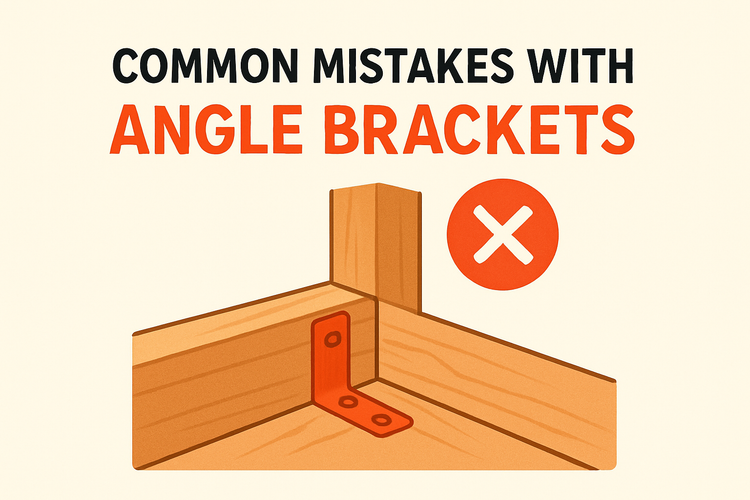Common Mistakes With Angle Brackets For Timber Projects

Misjudging Load Requirements for Angle Brackets
One of the most common errors in timber construction is underestimating how much load an angle bracket needs to support. This often leads to project failures or compromised safety.
Every timber joint experiences specific forces, and not all angle brackets are made to manage them equally. Builders sometimes pick brackets based on size or appearance, ignoring the manufacturer's load ratings. It's essential to select brackets based on comprehensive calculations of expected vertical and horizontal stresses. Manufacturers typically provide data sheets which should be considered when you’re planning structural loads.
This mistake frequently reveals itself over time when sagging beams or cracks in surrounding structures begin to show. When used alongside proper joist hangers, angle brackets can distribute weight more efficiently and improve structural integrity. Always consult an engineer if you're unsure of the weight force a connection will endure.
Incorrect Placement and Orientation of Angle Brackets
Installing angle brackets in the wrong orientation is a frequent yet avoidable problem. Even minor deviations in placement can drastically lower their effectiveness.
An angle bracket only provides optimal support when the forces it resists are aligned with its structure. Placing brackets too close to the timber edge or orienting them opposite to the load direction results in weakened joints. Misplacements also increase the risk of timber splitting, especially near exposed ends where natural resistance is already lower. This affects not just the aesthetic but the overall functionality of the structure.
Always ensure that the brackets are flush against both timber surfaces and that all fastener holes are fully utilized. Skipping screws or nails may seem like a shortcut but can lead to instability. Pairing angle brackets with suitable screws and nails ensures the bracket performs as designed.
Using Incompatible Fasteners
A bracket is only as strong as the fasteners that hold it. Choosing the wrong type or size can render even the highest-rated angle bracket ineffective.
In many cases, builders will use generic nails or screws without checking for compatibility with the angle bracket material and design. Galvanised brackets, for example, should be used with corrosion-resistant fasteners to maintain structural integrity over time. A mismatch in fastener coating can lead to accelerated corrosion, especially in outdoor or moisture-prone environments, weakening the joint line from within.
Furthermore, using fasteners that are too short or too thin means they may not penetrate deep enough into the timber to resist forces adequately. Always consult the product specifications that come with the bracket. If you're unsure, it's worth aligning the bracket selection with the proper type of screws and nails recommended by the manufacturer.
Over-Reliance on Angle Brackets Alone
It’s tempting to believe that angle brackets can solve all joint issues, but using them as the only support mechanism can result in weak constructions.
Angle brackets serve specific functions—mainly offering lateral strength and maintaining 90-degree connections. They should not be expected to bear all loads or replace structural techniques like notching or interlocking joints. Relying solely on them without incorporating complementary components like post bases or joist hangers can compromise overall integrity.
In larger or more complex timber projects, synergy among various connectors is key. Angle brackets provide a vital function but should be part of a broader framework of reinforcement. When used in combination, they contribute to a more resilient and long-lasting build that can better withstand stress, movement or environmental exposure.
Neglecting Environmental Factors and Corrosion Risks
Not accounting for environmental exposure can quickly deteriorate the performance of angle brackets. Timber used outdoors or in damp internal areas needs specially treated hardware.
Mistakes often happen when interior-grade brackets are used for outdoor decks, sheds, or fencing. Moisture causes untreated metal to rust, compromising both the bracket and the timber through staining or rot. For exterior or moisture-exposed projects, opt for galvanised or stainless steel brackets and pair them with compatible fasteners to avoid rust migration.
Extreme climates also place added stress on structural connectors. Where wind speed or humidity fluctuates greatly, using robust tie systems like high wind ties & timber connectors can reinforce critical joints where angle brackets may fall short. Proactively choosing materials suited for the setting saves time and costly rework in the future.
